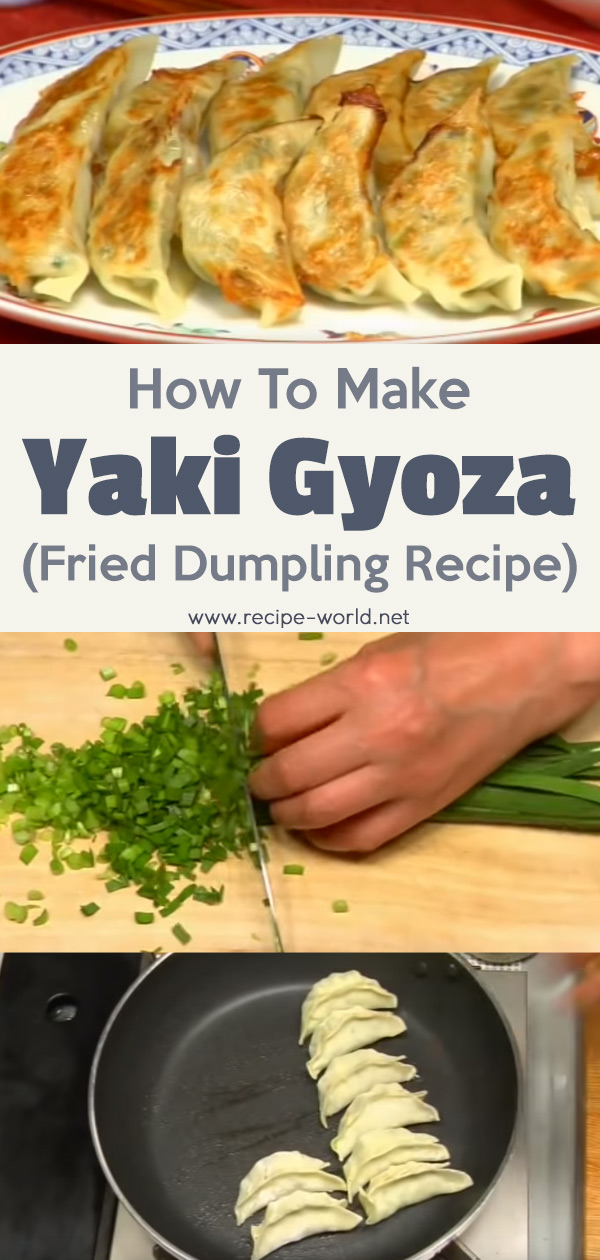Every part of the world has its own version of the mini filled pockets called dumplings. Dumplings can be made steamed, fried, savory or sweet and can be served in a soup, in sauce or with a dipping sauce. Originally from China, gyoza are Japanese dumplings which are popular both locally and worldwide. Gyoza are eaten as an appetizer or a side dish with a dipping sauce made from vinegar and soy sauce. The filling is typically made from minced meat, vegetables, and a mixture of seasonings. The most common way of cooking gyoza is yaki or pan-fried style. This makes the dumplings crispy on one side but soft and chewy on the other.
Frozen gyoza are available in most supermarkets but it is always better to make fresh ones at home. Let us show you how with this easy-to-follow recipe. You can even prepare these gyoza ahead of time and freeze them until you are ready to cook and serve.
Ingredients:
This recipe takes about 50 to 55 minutes to make. Makes 25 gyoza.
• 25 pieces of gyoza wrappers
• ¼ cup of flour
• 1 tbsp sesame oil
• 1 cup of boiling water
Filling:
• 120 grams of ground pork
• 100 grams of chopped cabbage
• 50 grams of chopped onions
• 50 grams of chopped garlic chives
• 1 tsp grated garlic
• ½ tsp grated ginger
• ½ tbsp soy sauce
• ½ tsp sugar
• ¼ tsp ground black pepper
• 1 tbsp sake
• ½ tbsp sesame oil
• 1 tbsp potato starch
• ½ tbsp oyster sauce
Dipping Sauce:
• 1 tbsp vinegar
• 1 tsp soy sauce
Instructions:
To make the filling, put ground pork in a mixing bowl.
With clean hands, knead the pork for about a minute.
Add soy sauce, sugar, pepper, sake, sesame oil, potato starch, garlic, ginger, and oyster sauce, then mix everything well.
Add chopped cabbage, onions, and garlic chives and mix well.
Cover the bowl with a plastic wrap and keep the filling in the fridge for 30 minutes.
To assemble the gyoza, spread about 1/2 to 3/4 tablespoon of the filling on a wrapper, leaving 1/4-inch space on all sides the wrapper.
Moisten the empty sides of the wrapper with water.
Fold the wrapper in half tucking the filling in.
Form pleats on the wrapper by folding an pressing one side.
Place the gyoza on a baking sheet dusted with flour.
Continue the process for the rest of the filling and wrapper.
To make the sauce, mix together vinegar and soy sauce in a small bowl, then set aside.
Heat a non-stick pan over medium heat.
Brush the bottom of the pan with sesame oil.
Arrange the gyoza on the pan and pour boiling water.
Cover the pan with a lid and cook until the water has evaporated.
Take the lid off, then pour in 1 tablespoon of sesame oil.
Cover the pan again with a lid and cook for another 1 to 2 minutes.
Turn the heat off and remove the lid from the pan.
Transfer the gyoza to a plate making sure that the crispy skin is facing up.
Serve with the prepared dipping sauce.
Ideas And Tips:
• You can use substitute potato starch with cornstarch.
• You can also substitute pork with chicken.
• If you want a spicy dipping sauce, you can add chili oil, chili paste, chili powder or cayenne powder.
• Gyoza wrappers are found in the freezer section of Asian markets and some supermarkets. When working with gyoza wrappers, make sure to keep the pile of unused ones in a clean damp cloth so they don’t dry out.
• The raw filling should not be kept for more than an hour in the fridge as it easily goes bad. If you want to store gyoza, freeze them immediately after assembling. They can last up to 3 months in the freezer. Do not thaw frozen gyoza before cooking. They will thaw while boiling in water.

images – https://www.youtube.com/watch?v=r8MBX-SXnmg
😳 What Tinnitus Does To Your Brain Cells (And How To Stop It)
After 47 years of studies and countless brain scans done on more than 2,400 tinnitus patients, scientists at the MIT Institute found that in a shocking 96% of cases, tinnitus was actually shrinking their brain cells.
As it turns out, tinnitus and brain health are strongly linked.
Even more interesting: The reason why top army officials are not deaf after decades of hearing machine guns, bombs going off and helicopter noises…
Is because they are using something called "the wire method", a simple protocol inspired by a classified surgery on deaf people from the 1950s...


